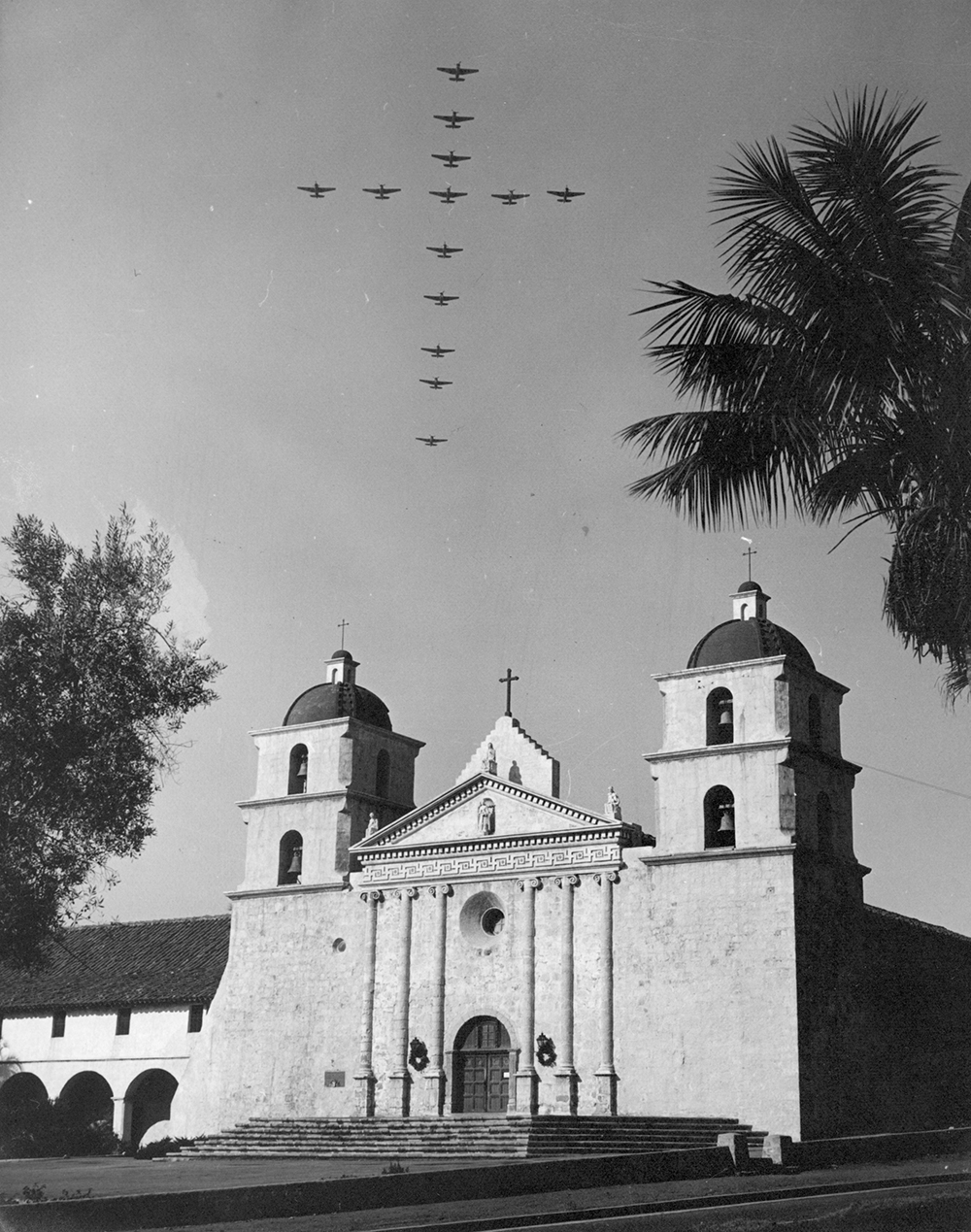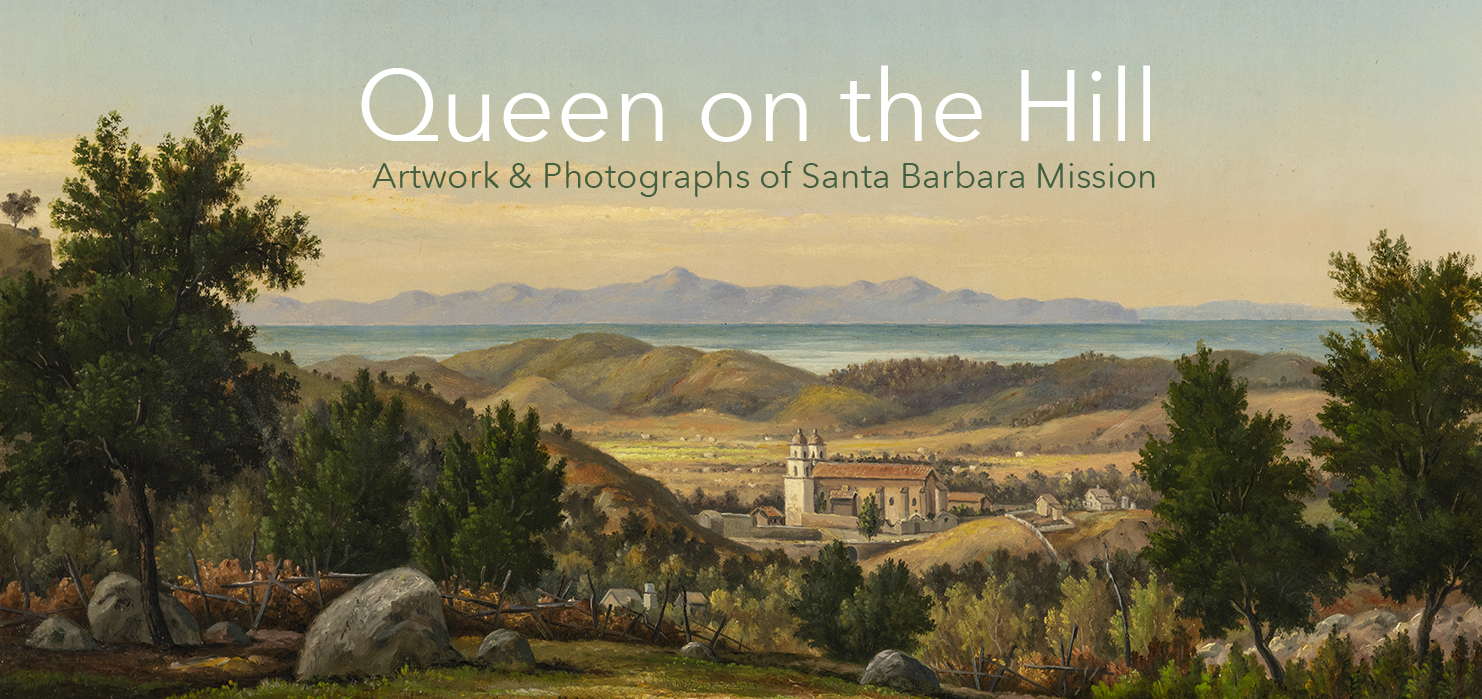Our Most Accessible Exhibition in History
A Unique Exhibition That Can Be Experienced Online Only
Generously Sponsored By John C. Woodward
High on a hill overlooking Santa Barbara is the community’s most recognizable, most iconic landmark – Mission Santa Barbara. Founded in 1786, this year the Mission celebrates the bicentennial of the dedication of the Mission church. In recognition of this benchmark event in the long history of the Mission, the Historical Museum has delved into its extensive fine arts and photographic collections to select some of the very finest images of this Santa Barbara institution as portrayed on canvas, paper and film.
The Mission began life as one of three cornerstones of the Spanish colonial administration in Alta California, those being civic, military and religious. Starting out as no more than a small mud and thatch edifice, it developed and grew down through the many decades into the twin-towered structure so familiar to us today. Surviving upheavals both man-made and natural, Mission Santa Barbara is unique among California’s twenty-one missions to boast an uninterrupted history of religious service since its founding. It is also the only California mission with matching twin towers. It truly is the “Queen of the Missions.”
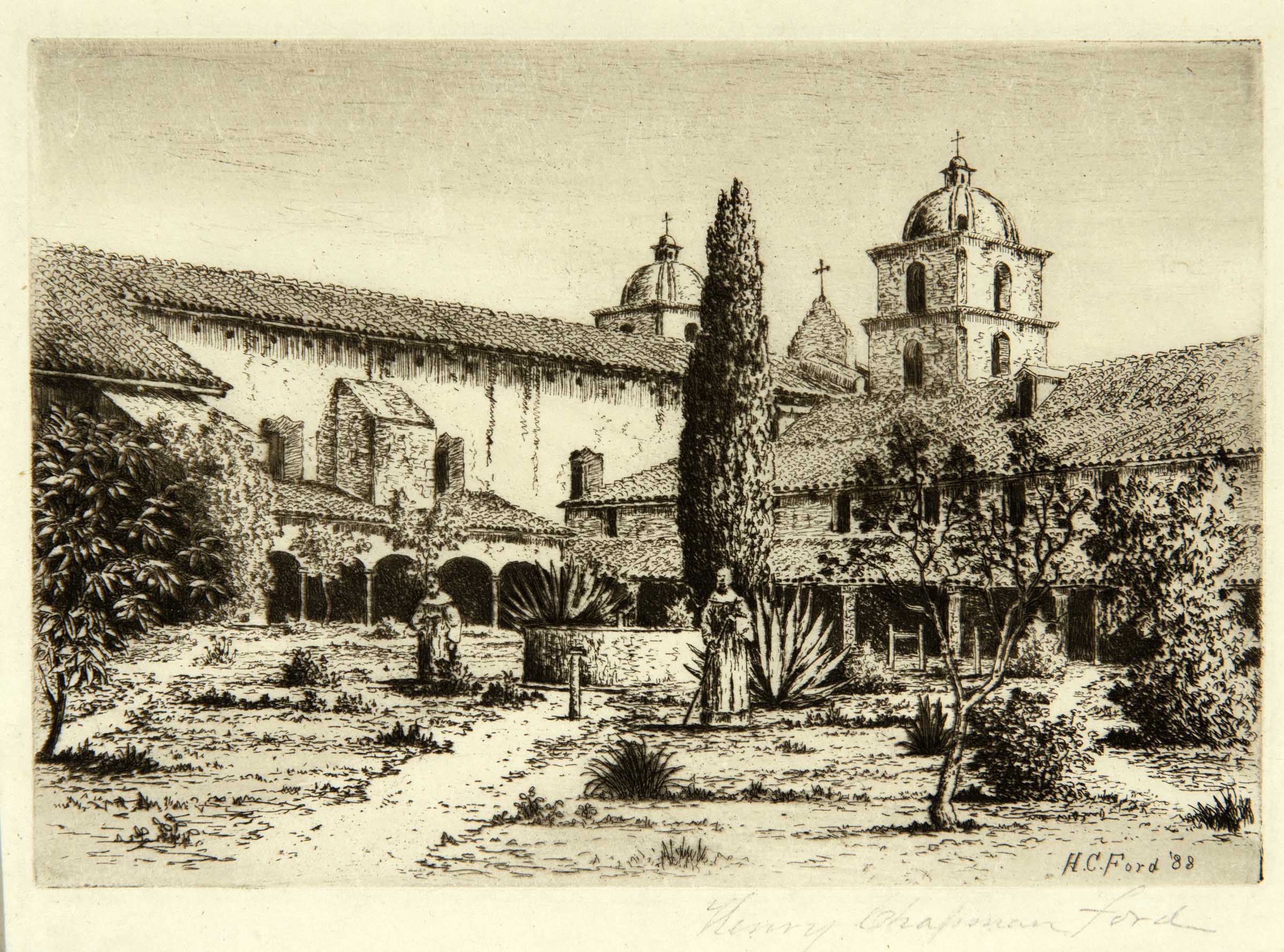
Artwork
Over decade after decade the most imposing, most impressive building on the South Coast was Mission Santa Barbara and many would argue it maintains that status today. And through all those decades the “Queen of the Missions” has been the subject of countless works of art. So, it is no surprise that among the hundreds of pieces of fine art in the collection of the Santa Barbara Historical Museum, the Santa Barbara Mission figures prominently.
We’ve selected a number of pieces in celebration of the 200-year anniversary of the dedication of the Mission Church. In choosing what to share with you we’ve cast a wide net to include oils, watercolors, gouaches, etchings, and drawings. A few of the artists represented include Henry Chapman Ford, Edward Borein, Carl Oscar Borg, Edwin Deakin, Mary Fish, and Russell Ruiz. Mission Santa Barbara has been a favorite of artists professional and amateur, renowned and little known – in their eyes truly the “Queen of the Missions.”
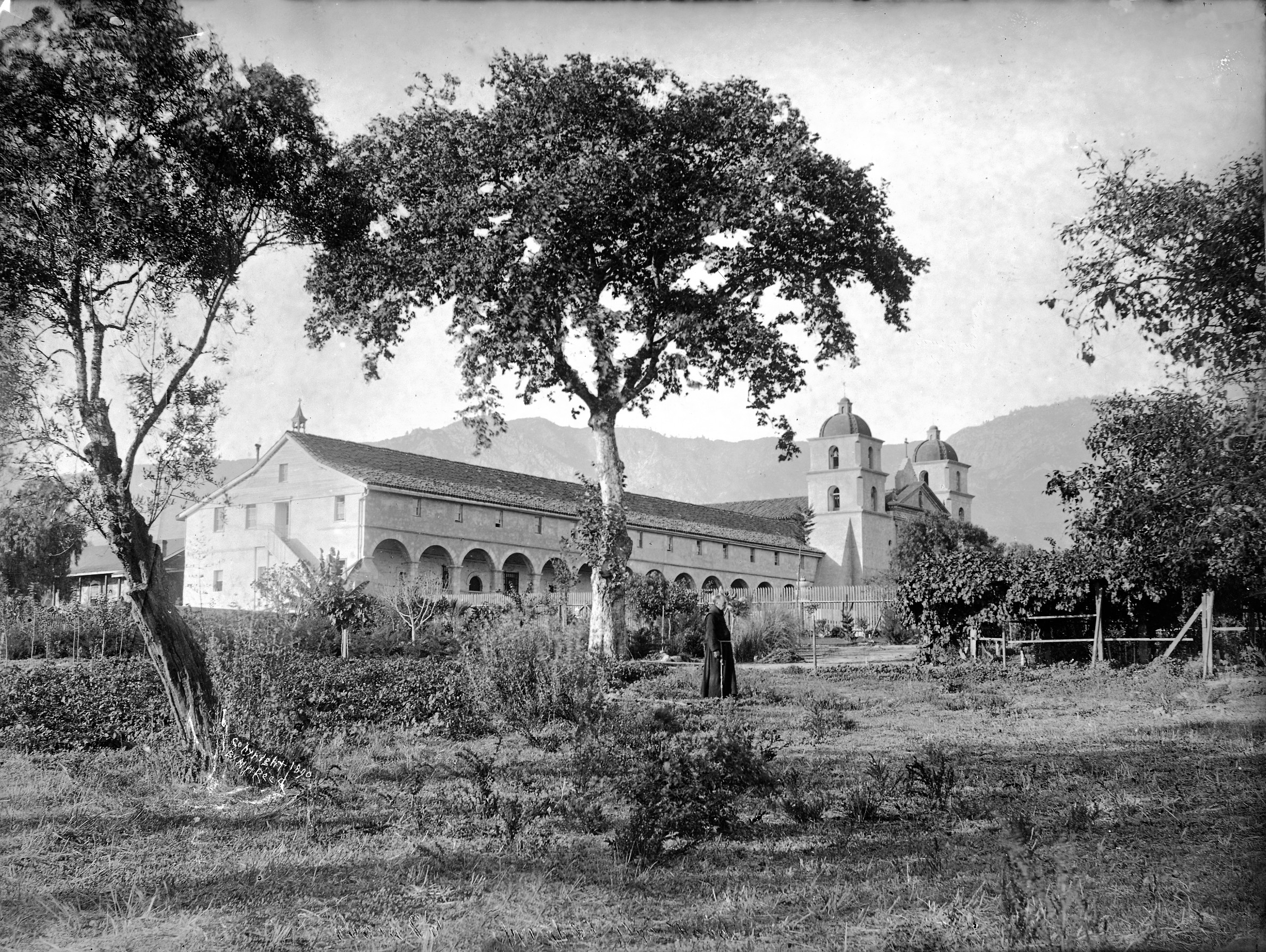
Photographs
Among the well over 100,000 photographic images in the collection of the Gledhill Library at the Santa Barbara Historical Museum, the Santa Barbara Mission is well represented. From the earliest days of photography in this area photographers, amateur and professional, have been drawn to the South Coast’s most recognizable landmark. For some 160 years the Mission has been portrayed on prints, on 35 millimeter slides, on stereographs, and in postcards and these images have been rendered in black and white, in color, sepia, and in the vibrant blue shadings of cyanotypes.
The cache of Mission photographs at the Gledhill captures not only the buildings and grounds and the changes they have undergone over time, but also comprise a visual document of the life of the Franciscan community there as well as the role the Mission has played in the larger Santa Barbara community. Please enjoy this selection of images of the “Queen of the Missions.”
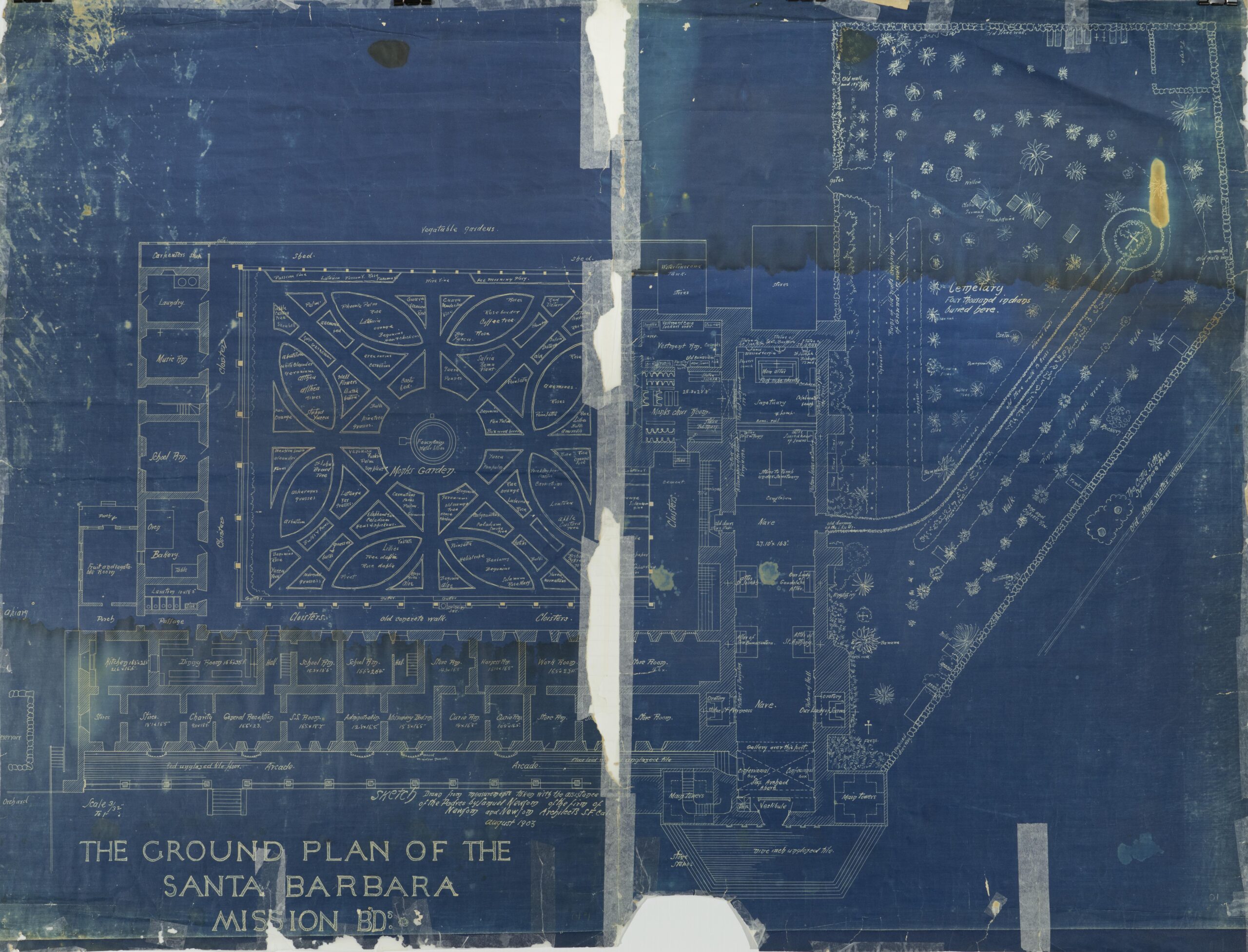
This 1903 blueprint of the buildings and grounds of the Santa Barbara Mission is incredibly detailed with the use of each room designated and the location and type of plantings for the garden shown. For a detailed view of the garden, click HERE.
Learn More
The Museum has a long history with our friends at Old Mission Santa Barbara. To learn more about their organization or to visit Mission Santa Barbara click HERE.
To learn more, check out our Noticias entitled Painting Santa Barbara Mission written in 1996 by Dr. Norman Neuerburg HERE.
You can also explore our past exhibition Sacred Art in the Age of Contact, Chumash and Latin American Traditions, c. 1769-1824 which explored the relationship between art and spirituality in both Chumash and Spanish traditions. Click HERE.
Featured Above:
Ford, Henry Chapman (American, 1828-1895), Santa Barbara Mission Cloister Garden, 1888.
Etching on paper. Gift of Albert Falvy.
Henry Chapman Ford was greatly interested in the natural world. The grounds of his home in the Carpinteria Valley down the coast from Santa Barbara was known as a horticultural showplace. He was a co-founder of the Santa Barbara Society of Natural History and served as president of the Santa Barbara Horticultural Society, penning papers for both organizations.
N.H Reed, Front of Mission Santa Barbara, looking northeast, 1890. Gledhill Glass Plate Collection

